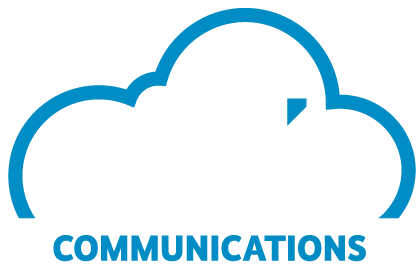New technology breaks the bottleneck to world’s largest artificial intelligence and machine learning models
New Providence, NJ—February 22, 2023—Nubis Communications, Inc. launched today from stealth mode, revealing a breakthrough optical technology platform and its first product. The company announced the first optical engine optimized from the ground up for Machine Learning and Artificial Intelligence (ML/AI) networks. The platform’s combination of record-breaking density and ultra low power enables customers to build the networks they need to unleash the full processing power of their ML/AI clusters. Founded in 2020 by industry luminary Peter Winzer and a cross-functional team of industry experts, Nubis has raised over $40 million from Matrix Partners and other leading investors to fully fund the development of their first product to volume production.
Nubis’ underlying technology building block is a 16 x 112 Gbps (full duplex) Silicon Photonics engine with integrated modulator drivers and transimpedance amplifiers. This 2D-tileable optical engine supports over 500 Gbps per millimeter of full-duplex edge I/O density, pitch-matched to the bandwidth density of modern SerDes. Utilizing its patented fiber array technology, Nubis is able to achieve this density improvement of 10x from today’s front-panel pluggable transceivers without the need to bundle multiple optical streams onto the same fiber, maintaining the full parallelism needed for all-to-all mesh connectivity between ML/AI servers. With a power consumption under 4 pJ per bit, Nubis’ platform provides a 4x power savings over today’s technology. The ultra-low power and ultra-high density are critical to the continued growth of ML/AI clusters in power-constrained data centers where AI models are growing at a rate of 35x every 2 years.
Nubis also announced today its first product based on this technology building block. Samples of the XT1600™ optical engine are available to customers now. The XT1600™ has a total capacity of 1.6 Tbps optical transmit and 1.6 Tbps optical receive carried over 16 fiber pairs, allowing full fan-out and flexible assignment as sixteen independent 100-Gbps full-duplex channels, four separate 400 Gbps full-duplex channels, or two 800 Gbps full-duplex channels. The XT1600™ engine is optimized for unretimed direct-drive operation, connecting directly with host ASIC SerDes designed for copper links. This direct-drive approach dramatically lowers the power, size, and cost of the optical solution. Nubis plans to announce later this year additional products utilizing its technology across different use cases, including retimed pluggable modules, active optical cables and co-packaged optics modules.
“Our customers have consistently told us that the power and size of conventional optics are unsustainable,” said Dan Harding, CEO of Nubis Communications. “They are building the largest and highest performing data interconnect clusters in the world and are depending on us to deliver optics that are orders of magnitude denser, lower power, and more efficient to enable their network build-outs.”
“We are on the cusp of a major technology transition as speed and power requirements demand that optics become the dominant interconnect in the datacenter,” explained Stan Reiss of Matrix Partners. “Peter and Dan have assembled a world class team to address this challenge with leading experts in Silicon Photonics, packaging and electronics to deliver the solution.” Nubis has received funding from Matrix Partners, Launch Capital, imec.xpand, Weili Dai and Sehat Sutardja, Comerica Technology and Life Sciences fund and others.
“Datacenter optics at 800G and above will continue to grow strongly, with a mix of pluggable transceivers, active optical cables and co-packaged optics totaling $8.4B by 2027,” confirms Vlad Kozlov, CEO of industry analysis firm LightCounting. ”Over the next five years, there will be an explosion of completely new approaches to delivering optics. Hyperscalers and leading ML/AI vendors are demanding architectural innovations that achieve 10x improvement in cost and power over existing solutions, and new approaches taking full advantage of advancements in silicon photonics and hybrid packaging will be necessary to meet these demands.”
The unprecedented growth of ML/AI has completely upended the role of networking and the requirements for interconnect. The network and compute cluster size limits the size of ML/AI models that can be tackled. For large recommendation workloads, networking is already wasting up to 57% of the total task time. Increasing the accelerator bandwidth to enable these desired ML/AI cluster sizes with existing optical technology would consume more than 70% of the total training cluster power, which is unsustainable.
“AI workloads often double in 4-5 months. The only way to support that growth is through more processors and more interconnect. Only optics can scale spatially to support the AI growth at datacenter distances as they come, but the solution must have radically better cost, density, service reliability, and power consumption over existing optics. The Nubis technology is a major step toward meeting all these targets,” said Yong Kim, Corporate Fellow at Tenstorrent, Inc., a next generation computing company developing optimized computers for AI.
Nubis improves density, power and cost such that optics can become the pervasive interconnect technology that AI system designers need, replacing both intra-rack copper and traditional datacenter optics. Nubis’ breakthrough is based on re-thinking the optical design to substantially lower the required performance and power of the optical DSP or even eliminating it entirely. Founder Peter Winzer explains, “Our solution is optimized to work with modern SerDes, not only pitch matching to their edge I/O density but meshing with their capabilities for power-efficient direct-drive. The result is that AI accelerators or similar large ASICs can achieve full bandwidth connectivity within the datacenter at a fraction of the power compared to traditional optical solutions. Further, our approach lends itself well to novel emerging box architectures as well as to native chiplet implementations for even tighter integration in the future.”
Availability
The Nubis XT1600™ optical engine is available now for sampling, please contact via nubis-inc.com.
About Nubis Communications
Nubis Communications was founded in 2020, quickly establishing a core technical team encompassing world-class expertise in silicon photonics, digital and analog IC design, as well as electronic and optical packaging. Backed by premier venture capital firm Matrix Partners, Nubis has received additional funding from Launch Capital, imec.xpand, Weili Dai and Sehat Sutardja, Comerica Technology and Life Sciences fund and others.
For more information visit http://www.nubis-inc.com.
XT-1600 and the Nubis Cloud Logo are trademarks of Nubis Communications.
Editorial Contact
Karen Liu
+1-908-517-3558
karen.liu@nubis-inc.com

